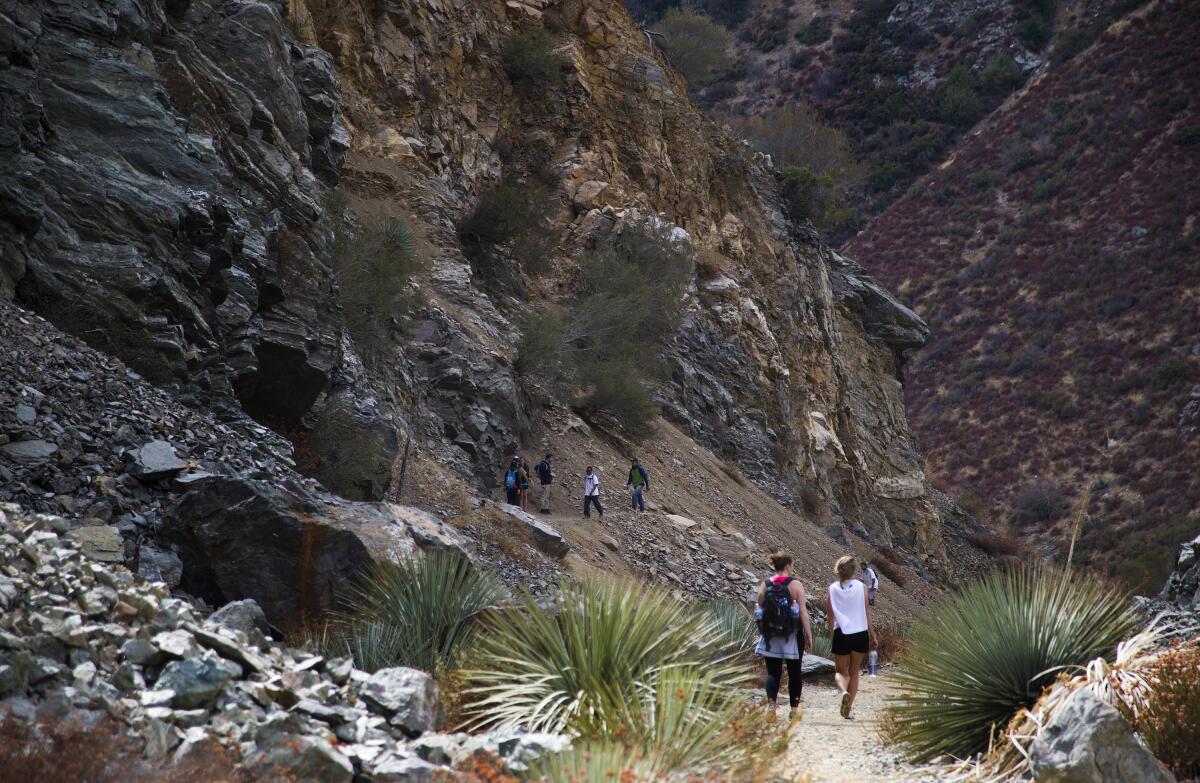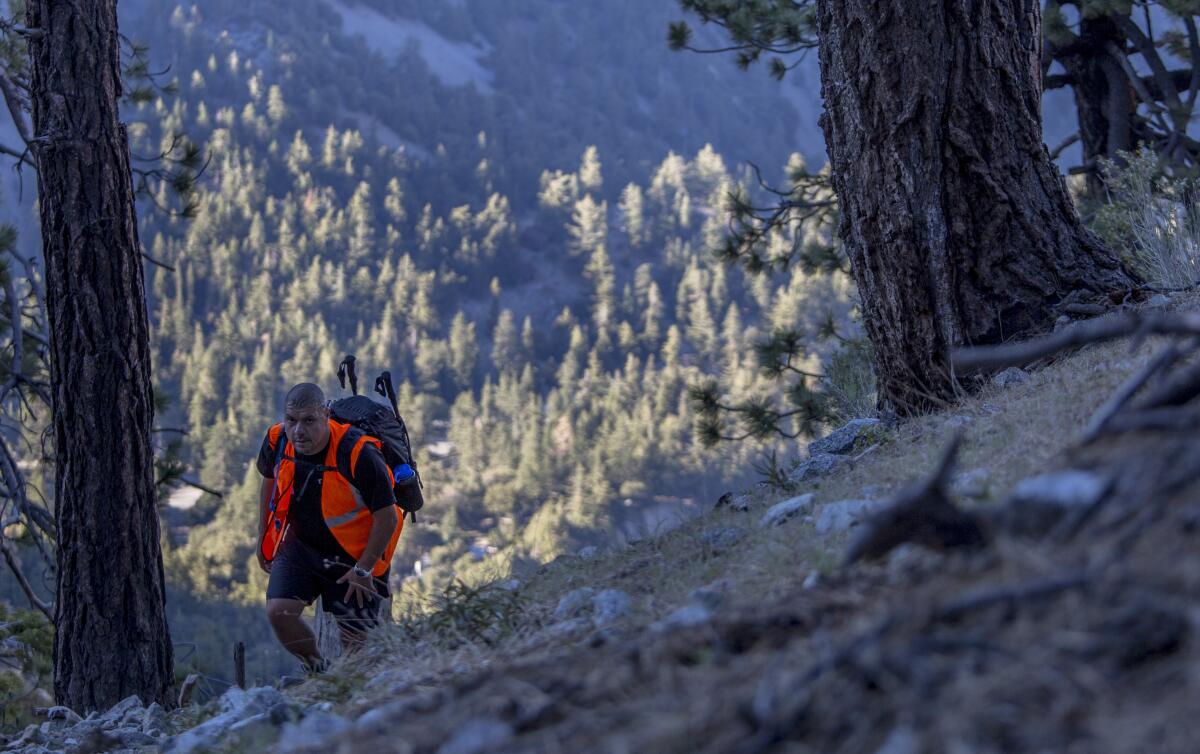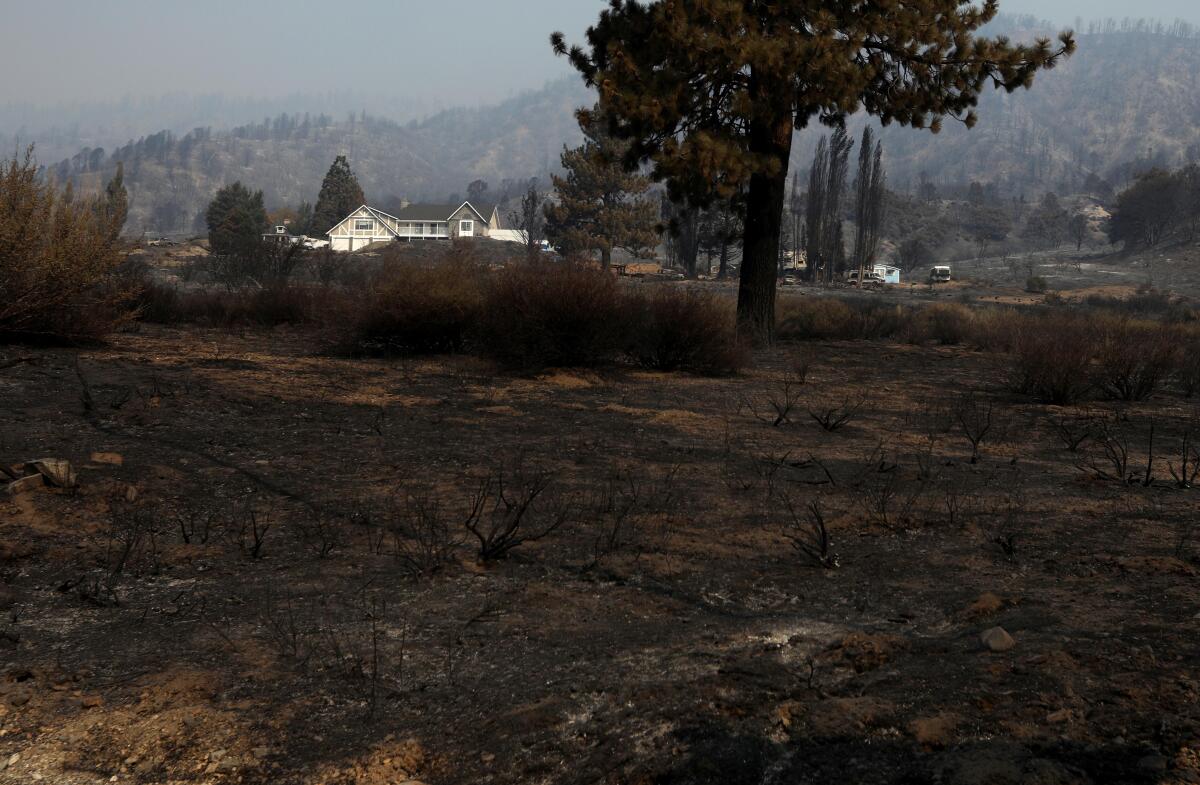[ad_1]
As the Bridge fire spread from the East Fork of the San Gabriel River to the beloved mountain communities of Mount Baldy and Wrightwood last week, questions arose about what would be left in its wake. And those included which beloved hiking trails in the region were affected.
Now that the fire is 25% contained, an accounting of damage and trail closures has begun. Although firefighters saved local favorites such as Icehouse Canyon and the San Antonio Ski Hut in the Mt. Baldy area and the Mt. Baden-Powell hike near Wrightwood, several popular routes have been burned.
To put together a better picture of the damage, The Times consulted mapping tool CalTopo, cross-referencing its maps and the Bridge fire footprint with lists of local hiking trails to determine which routes were in the burn area. That said, just because a trail is in the burn area doesn’t mean it was destroyed. We’ll learn more about specific conditions of each trail in the coming weeks and months, as well as when trails might start to reopen.
In the coming days, officials are expected to release the U.S. Forest Service’s first closure order outlining what parts of the burn area will remain closed. Just because a trail isn’t on the list below doesn’t mean it is open. If you’re not sure about a particular location, it’s best to call an Angeles National Forest office to speak with staff about the area you’d like to visit.
Below is a preliminary list of hiking areas that were burned in the Bridge fire.
East Fork and Camp Williams area

Hikers make their way along the Bridge to Nowhere Trail in the San Gabriel Mountains in October 2016.
(Gina Ferazzi / Los Angeles Times)
The Bridge fire was named after Cattle Canyon bridge in the East Fork of Angeles National Forest, where it started.
Although the fire got close, firefighters were able to save Camp Williams Cafe & General Store and Camp Williams Mobile Home Park from burning.
However, the hiking trails below appear to have been affected:
Mt. Baldy area

A hiker takes on the Mt. Baldy Trail in May 2017.
(Brian van der Brug / Los Angeles Times)
The mountain community of Mount Baldy isn’t currently reachable because of road closures, but will be reachable once firefighters and forest officials survey and clean the area.
Popular hiking trails, including Icehouse Canyon and Icehouse Saddle appear, via the fire map, to not have burned in the Bridge fire. Additionally, San Antonio Falls, Ontario Peak, Cucamonga Peak, Cedar Glen Camp, and the three T’s — Timber Mountain, Telegraph Peak and Thunder Mountain — also did not burn. Although the fire moved near Stoddard Peak’s trailhead, its trail was spared.
Here is a list of some of the popular trails that appear to have burned, according to The Times’ analysis:
Wrightwood and Vincent Gap area

A charred landscape surrounds a home that survived the Bridge fire in Wrightwood. Many popular trails nearby were also damaged.
(Genaro Molina / Los Angeles Times)
Although the fire got within about 500 feet of the Mt. Baden-Powell trail, it was not burned in the Bridge fire. Additionally, nearby mountains, including Mt. Burnham, Throop Peak and Mt. Hawkins, did not burn. The immediate area surrounding Jackson Lake was not burned, but multiple trails in that area did. The Grassy Hollow Visitor Center was destroyed.
This list is based on preliminary data and will be updated, including once Angeles National Forest issues a closure order, outlining which areas will remain closed after the Bridge fire is contained.
[ad_2]
Source link